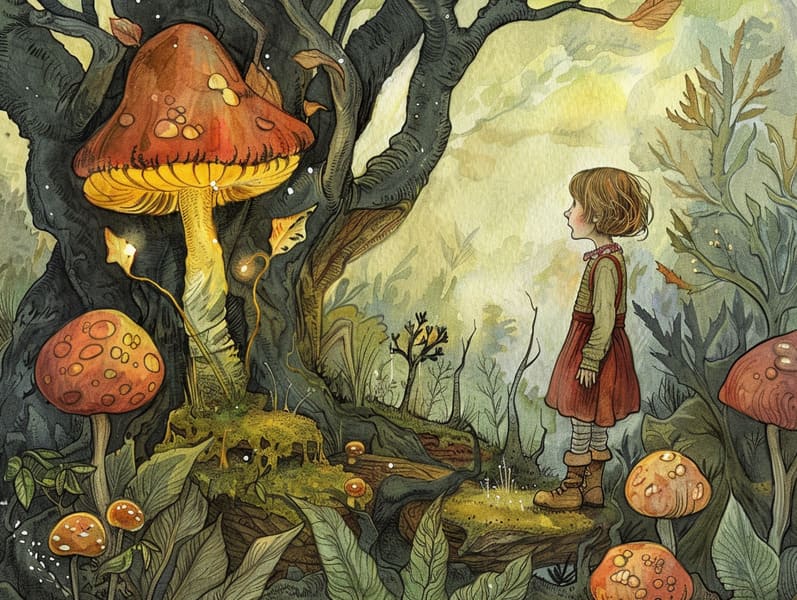The Journey of Fairy Tales for Kids and Its Undying Mystique.
The Journey of Fairy Tales for Kids and Its Undying Mystique.
Blog Article

Vintage fairy tales have old origins. These tales have been shared from one generation to the next long before they were ever documented. They came from a variety of societies, including Indigenous traditions. They were initially transmitted among grown-ups, often carrying themes and messages relevant to the societal norms and beliefs of the time.
The Grimm brothers, Jacob and Wilhelm (the Grimm brothers), were among the first to compile and publish many of these beloved narratives. Their collection, "Grimm's Fairy Stories," included stories like "Ashenputtel," "Hansel and Gretel," and "Snow-White and Rose-Red," which have since become pillars in the world of traditional fairy tales. Similarly, Hans Andersen's imaginative stories, such as "The Little Mermaid," and "The Little Duckling," have won hearts worldwide, cementing their place in the pantheon of beloved fairy tales.
Despite being ancient, traditional fairy tales remain as pertinent as ever, especially as nighttime stories for kids. These delightful tales are now available in numerous formats, including beautifully illustrated books, enchanting animations, and online storybooks.
Their enduring popularity can be credited to several delightful features:
Key Lessons: Old fairy tales often illustrate important moral lessons. Tales like "The Story of the Boy Who Cried Wolf" teach the significance of being truthful, while "The Tale of the Tortoise and the Hare" exemplify the benefits of resolve and unpretentiousness. These narratives offer young ones clear distinctions between good and bad, developing their moral compass in a soft yet meaningful way.
Compassion and Insight: Classic fairy tales frequently feature heroes facing tests and troubles, prompting readers to sympathize with their struggles and celebrate their triumphs. For instance, "Beauty and the Beast" teaches us the virtue of appreciating inner worth to perceive the real character of a being, encouraging empathy and knowledge.
Cultural Insights: Many ancient fairy tales are deeply embedded in the cultural contexts from which they blossomed. Delving into these fairy tales can provide fascinating glimpses into different heritages, fostering a sense of international awareness and appreciation.
Fantasy and Imagination: The supernatural elements in classic fairy tales—fairy godmothers—invigorate children’s fantasy worlds. These tales guide readers to fantasy realms, engendering creative ideas and a sense of enchantment that remains a lifetime.
Ancient fairy tales are not only enchanting but also didactic. They serve as captivating tools in enhancing various mental and emotional abilities in young ones. When timeless fairy tales are spoken out loud, they develop communication skills by showing new linguistic elements and complex sentence structures. This practice also strengthens auditory perception and concentration, as children concentrate deeply, enthusiastic to see what happens next.
Furthermore, debating the themes and characters of fairy tales can cultivate problem-solving abilities and critical thinking. The young are guided to spot patterns, make predictions, and understand cause and effect. These analyses also benefit children speak out their thoughts and feelings, adding to their emotional intelligence.
In today’s online age, the accessibility of free fairy tales online has made these stories more within reach than ever. Online platforms and web apps feature vast collections of famous fairy tales that can be browsed or listened through anytime, anywhere. Fairy tales spoken are particularly in demand, featuring an fascinating method for kids to take part in these captivating stories. Audiobooks and read-out-loud stories carry characters and settings to life, often supported by mesmerizing background sounds and harmonies that improve the storytelling journey.
The lasting appeal of classic fairy tales lies in their ability to alter to present eras while maintaining their key morals. Contemporary modernizations of these narratives often spotlight more representative this site protagonists and modern settings, making them understandable to today’s audience. However, the key lessons of spirit, humanity, and righteousness remain unchanged, continuing to reach kids of all ages.
Fairy tales also offer a sense of coziness and predictability. They deliver a coherent narrative with a recognizable beginning, middle, and end, often drawing to a close with the culmination of conflicts and the triumph of right over wrong. This certainty can be placating for young ones, providing a sense of assuredness in an variable world.
Classic fairy tales continue to mesmerize and guide new generations, maintaining their charm and pertinence in modern society. As kids' bedtime tales, they afford a perfect blend of magic and knowledge, developing moral values, empathy, and creativity. The accessibility of internet fairy tales and the sought after status of fairy tales recited certify that these classic stories remain available to new generations.
By continuing and disseminating these narratives, we continue to appreciate the rich tapestry of fantasy and cultural heritage. Whether you are browsing a vibrantly illustrated book, discovering a web-based library, or listening to an read-aloud book, the magic of children's fairy tales is always within reach. These narratives show us of the ageless power of stories and its ability to bind us across time and space.
Regardless if you are perusing a richly illustrated book, seeing a electronic collection, or listening on an audio story, the appeal of popular fairy tales is always within reach.
These stories teach us of the persistent force of tales and its ability to hold us together across eras and regions, creating a bond that fascinates and enlightens alike.